#Herakleia
Text
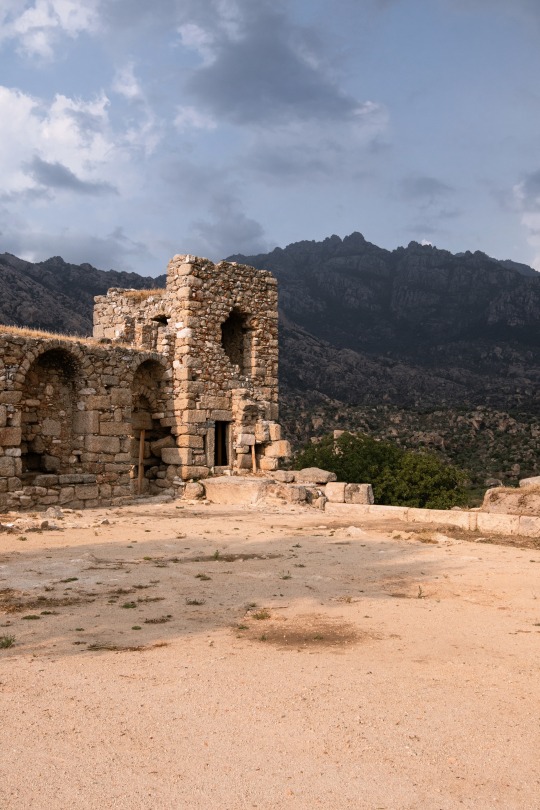
..
#landscape#mountains#archaeology#hiking#türkiye#original photographers#autumn#original photography#fall#turkey#herakleia#latmos#nature#autumn aesthetic#fall aesthetic#landscape photography#caria#bafa gölü#Muğla#aydın#architecture#antiquity
8 notes
·
View notes
Text


HYDRIA | Described as "Patroclus killing Sarpedon, whose body is carried away by Hypnos and Thanatos" [around the neck].
Body : Amazonomachy [Patroclus and Two Amazons].
Proto-Lucanian Red-figured Hydria attributed to the Policoro Painter
End of the 5th c. BC
[From Herakleia Tomb I. also known as "Tomb of the Policoro Painter"]
[Loan to] Baths of Diocletian, Museo Nazionale Romano | MNR BOD
[Ground Floor Hall II. "The Eternal Fame of Heroes" Exhibition, June 2023]
From Museo Archeologico Nazionale della Siritide or "Policoro Museum":
• Web : https://museosiritide.beniculturali.it
• IG : @museonazionaleromano @museibasilicata
MNR BOD MANSiritide | Michael Svetbird phs©msp | 18|06|23 6000X4300 600
The photographed object is the collection item of MAN Siritide & MNR and subject to copyrights.
[non commercial use | sorry for the watermarks]
#rome#bathsofdiocletian#termedidiocleziano#museonazionaleromano#siritide#archaeological museum#herakleia#policoro#painter#hydria#vasepainting#ancient pottery#red figure pottery#lucania#pottery#arthistory#antiquity#antiquities#archaeology#ancient#museology#greekmythology#ancientart#patroclus#amazonomachy#amazons#amazzoni#archaeologyphotography#museum photography#michaelsvetbird
16 notes
·
View notes
Text

x
#Iraklia#Herakleia#Heraklia#beach#mediterranean#Гераклия#Ηράκλεια#طبيعة#شاطئ#bãi biển#sahil#παραλία#greece
1 note
·
View note
Text
"There is one clear early Hellenistic example of a regnant basilissa: Amastris, who ruled Herakleia Pontika after the death of her husband, its tyrant Dionysios. She eponymously founded the neighboring city of Amastris c. 300 BCE, and from there issued coins bearing the legend “of basilissa Amastris" (ΑΜΑΣΤΡΙΟΣ ΒΑΣΙΛΙΣΣΗΣ). Like many other women ruling as monarchs, Amastris came into direct power because her husband had died and her sons were under age. She brought her own royal credentials to the situation, however, as a niece of Dareios III (daughter of his brother Oxyathres). Like Apama, Alexander had married her to one of his generals (Krateros). After 323 Krateros swapped her for Phila, and she moved to Herakleia to live with Dionysios, who, as Memnon tells us later (probably after 306), began to call himself basileus. Although supervising the regency for her sons, Amastris faced interventions by Antigonos Monophthalmos, ostensibly on the children’s behalf, to control Herakleia, and then by Lysimachos, who also married her. By 300 she was solo again with no outside interference, and her foundation of Amastris marks the point when she fully embraced the role of a regnant basilissa. Although her sons soon came of age, she maintained this role until they assassinated her c. 284."
-Gillian Ramsey, "Apama and Stratonike," "The Routledge Companion to Women and Monarchy in the Ancient Mediterranean World" (edited by Elizabeth D. Carney and Sabine Müller)
16 notes
·
View notes
Text

The three festivals which I've placed in the Thasian month of Thargelion (which is out of sync with the Athenian calendar for now, things will line up again next month.)
The Great Herakleia and the Choreia are both atttested in the festival list provided by inscription SEG xix 415 as festivals for which legal business was not permitted at the end of the 4th century on the island. Herakles was the city's patron deity alongside Dionysus, so it is not surprising for their respective festivals to be considered as important.
I celebrate the Herakleia on the 4-5th. Historically, Herakles received the sacrifice of an ox was worshipped under the epithet of Kallinikos (fair victor). I have kept the epithet and offer beef-based foods.
The Thargelia is an personal addition based on the fact that the month of Thargelion is attested for Thasos. There is solid ground to assume that the Thargelia was celebrated on the island, mainly from the fact that this is one of the most widespread festivals in the Greek world, including in Thasos' mother city, Paros. It is not an exact copy of the Athenian version, but I have kept the main elements. I celebrate it on the 6th-7th for Artemis and Apollo, with an emphasis on the Delian (Delia, Delos) epithets, due to Thasos' heritage of cycladic influence. I have kept the staple offering of panspermia, which I make using figs, seasonal fruits, milk and oat flakes.
And the final festival for the month is the Choreia for Dionysus, which is not well known and attested nowhere outside of Thasos, except for Dionysus' epithet Choreios which Plutarch claims is from the island of Paros, Thasos' mother city. The festival is assumed to have involved dancing, singing or theatrical contests, but we do not have enough information about it to know. I celebrate it on the 12th-15th of the month and typically offer beef and fennel, as well as wine. This year I served it in a samoon bread because I felt like it (it pairs wonderfully).
Keep in mind that my personal practice is both very speculative and locally-focused. I share details of my practice only for the sake of sharing the methodology behind what I do and doesn't mean that my way of doing things is the only possible way.
#thasian recon#personal practice#my intercalary month is starting at the next new moon and it's going to be a welcome break#having 3 festivals so close from one another is ooof
27 notes
·
View notes
Text
My calendar, translated to our modern calendar for ease.
January:
• Not included. Started my translation in February.
February:
• 1st - Imbolc
• 3rd-6rd - Lenaia
• 11th - Libation to Aphrodite
• 14th - Valentine’s Day
• 18th - Theogamia
• 20th - Hekate’s Deipnon
• 21st - Noumenia
• 22nd - Agathos Daimon
• 23rd - Veles and Lucifer’s Day of Worship
• 24th - Aphrodite, Hermes, Loki, and Freyja’s Day of Worship
• 25th - Dionysus and Prince Seere’s Day of Worship
• 26th - Ares’ Day of Worship
• 27th - Apollon’s Day of Worship
• 28th - Melinoe and Hades’ Day of Worship
March:
• 1st - Zeus, Hera, and Egeria’s Day of Worship
• 3rd-5th - Anthestaria
• 11th - Libation to Hephaistos
• 15th - Diasia
• 17th - St. Patrick’s Day
• 21st - Ostara
• 22nd - Hekate’s Deipnon
• 23rd - Noumenia
• 24th - Agathos Daimon
• 25th - Veles and Lucifer’s Day of Worship
• 26th - Aphrodite, Hermes, Loki, and Freyja’s Day of Worship
• 27th - Dionysus and Prince Seere’s Day of Worship
• 28th - Ares’ Day of Worship / Elaphebolia
• 29th - Apollon’s Day of Worship
• 30th - Melinoe and Hades’ Day of Worship / Asklepia
• 31st - Zeus, Hera, and Egeria’s Day of Worship
April:
• 1st-8th - Dionysia ta Astika
• 8th - Pandia / Libation to Artemis
• 9th - Easter
• 20th - Hekate’s Deipnon
• 21st - Noumenia
• 22nd - Agathos Daimon / Earth Day
• 23rd - Veles and Lucifer’s Day of Worship
• 24th - Aphrodite, Hermes, Loki, and Freyja’s Day of Worship
• 25th - Dionysus and Prince Seere’s Day of Worship
• 26th - Ares’ Day of Worship / Delphinia
• 27th - Apollon’s Day of Worship
• 28th - Melinoe and Hades’ Day of Worship
• 29th - Zeus, Hera, and Egeria’s Day of Worship
May:
• 1st - Beltane
• 5th - Cinco de Mayo
• 6th - Mounykhia
• 9th - Olympeia
• 13th - Libation to Apollon
• 20th - Hekate’s Deipnon
• 21st - Noumenia
• 22nd - Agathos Daimon
• 23rd - Veles and Lucifer’s Day of Worship
• 24th - Aphrodite, Hermes, Loki, and Freyja’s Day of Worship
• 25th - Dionysus and Prince Seere’s Day of Worship
• 26th - Ares’ Day of Worship / Thargelia
• 27th - Apollon’s Day of Worship / Thargelia
• 28th - Melinoe and Hades’ Day of Worship
• 29th - Zeus, Hera, and Egeria’s Day of Worship
June:
• 8th - Bendideia
• 10th - Libation to Zeus
• 14th - Kallynteria
• 15th - Plynteria
• 18th - Hekate’s Deipnon
• 19th - Noumenia
• 20th - Agathos Daimon
• 21st - Veles and Lucifer’s Day of Worship / Arrephobia / Litha
• 22nd - Aphrodite, Hermes, Loki, and Freyja’s Day of Worship
• 23rd - Dionysus and Prince Seere’s Day of Worship
• 24th - Ares’ Day of Worship
• 25th - Apollon’s Day of Worship
• 26th - Melinoe and Hades’ Day of Worship
• 27th - Zeus, Hera, and Egeria’s Day of Worship
• 30th - Skira
July:
• 2nd - Bouphonia and Dipoleia
• 4th - Independence Day
• 8th - Libation to Athena
• 18th - Hekate’s Deipnon
• 19th - Noumenia
• 20th - Agathos Daimon
• 21st - Veles and Lucifer’s Day of Worship
• 22nd - Aphrodite, Hermes, Loki, and Freyja’s Day of Worship
• 23rd - Dionysus and Prince Seere’s Day of Worship
• 24th - Ares’ Day of Worship
• 25th - Apollon’s Day of Worship
• 26th - Melinoe and Hades’ Day of Worship
• 27th - Zeus, Hera, and Egeria’s Day of Worship
• 30th - Kronia
August:
• 1st - Lammas
• 2nd-3rd - Synoikia
• 10th-17th - Panathenaia ta Megala
• 12th - Libation to Hermes
• 17th - Hekate’s Deipnon
• 18th - Noumenia
• 19th - Agathos Daimon / Herakleia
• 20th - Veles and Lucifer’s Day of Worship
• 21st - Aphrodite, Hermes, Loki, and Freyja’s Day of Worship
• 22nd - Dionysus and Prince Seere’s Day of Worship
• 23rd - Ares’ Day of Worship
• 24th - Apollon’s Day of Worship
• 25th - Melinoe and Hades’ Day of Worship
• 26th - Zeus, Hera, and Egeria’s Day of Worship
September:
• 1st-4th - Eleusinia
• 2nd - Other Major Gods’ Day of Worship
• 6th - Hera Telkhinia
• 9th - Demeter and Persephone’s Day of Worship
• 11th - Zeus Epoptes
• 15th - Hekate’s Deipnon
• 16th - Noumenia
• 17th - Agathos Daimon / Niketeria
• 18th - Veles and Lucifer’s Day of Worship
• 19th - Aphrodite, Hermes, Loki, and Freyja’s Day of Worship
• 20th - Dionysus and Prince Seere’s Day of Worship / Genesios
• 21st-22nd - Mabon
• 21st - Ares’ Day of Worship / Artemis Agrotera
• 22nd - Apollon’s Day of Worship
• 23rd - Melinoe and Hades’ Day of Worship
• 24th - Zeus, Hera, and Egeria’s Day of Worship
• 27th - Demokratia
October:
• 2nd - Epidauria
• 7th - Libation to Hades
• 9th - Feast for Native Ancestors (Indigenous Peoples’ Day)
• 12th - Spirits (Nymphs, Spirits of the Home, etc.) Day of Worship
• 14th - Libation to Poseidon
• 15th - Hekate’s Deipnon
• 16th - Noumenia
• 17th - Agathos Daimon
• 18th - Veles and Lucifer’s Day of Worship
• 19th - Aphrodite, Hermes, Loki, and Freyja’s Day of Worship
• 20th - Dionysus and Prince Seere’s Day of Worship
• 21st - Ares’ Day of Worship / Proerosia
• 22nd - Apollon’s Day of Worship / Oskophoria / Pyanepsia
• 23rd - Melinoe and Hades’ Day of Worship / Theseia
• 24th - Zeus, Hera, and Egeria’s Day of Worship
• 26th-28th - Thesmophoria
• 31st - Halloween
• 31st-2nd - Día De Los Muertos
November:
• 31st-2nd - Día De Los Muertos
• 11th - Libation to Ares
• 14th - Hekate’s Deipnon / Khalkeia
• 15th - Noumenia
• 16th - Agathos Daimon
• 17th - Veles and Lucifer’s Day of Worship
• 18th - Aphrodite, Hermes, Loki, and Freyja’s Day of Worship
• 19th - Dionysus and Prince Seere’s Day of Worship
• 20th - Ares’ Day of Worship
• 21st - Apollon’s Day of Worship
• 22nd - Melinoe and Hades’ Day of Worship
• 23rd - Zeus, Hera, and Egeria’s Day of Worship / Thanksgiving
• 24th - Pompaia
December:
• 9th - Libation to Dionysus
• 13th - Hekate’s Deipnon
• 14th - Noumenia
• 15th - Agathos Daimon
• 16th - Veles and Lucifer’s Day of Worship
• 17th - Aphrodite, Hermes, Loki, and Freyja’s Day of Worship
• 18th - Dionysus and Prince Seere’s Day of Worship / Plerosia
• 19th - Ares’ Day of Worship
• 20th - Apollon’s Day of Worship
• 21st-22nd - Heliogenna
• 21st - Melinoe and Hades’ Worship / Poseidea / Yule
• 22nd - Zeus, Hera, and Egeria’s Day of Worship
• 23rd - Rural Dionysia
• 24th - Christmas Eve / Feast of the Seven Fishes
• 25th - Christmas
12 notes
·
View notes
Text
Saints&Reading: Wednesday, June 21, 2023
june 21_june 8
SAINT EPHREM, PATRIARCH OF ANTIOCH (546)

Saint Ephraim, Patriarch of Antioch, a Syrian, was a military general under the emperors Anastasius (491-518) and Justin (518-527). The saint was distinguished for his virtue, piety, and compassion for all the destitute.
In 526, the Lord punished Antioch for Christians falling into the heresies of Nestorius and Eutyches: an earthquake destroyed this magnificent city. A large number of the inhabitants perished. Patriarch Euphrasios was crushed beneath a fallen column.
The emperor summoned Ephraim to oversee the restoration of the ruined city. Among the workers was a bishop who left his see for unknown reasons. He predicted Ephraim's election to the patriarchal throne and asked him not to abandon deeds of charity and to struggle firmly against the heretics. In the year 527, Ephraim was indeed elected to the patriarchal throne. He governed his flock firmly and wisely by the example of his life. He also defended it against heretical teachings through his sermons and letters.
The following event gives some idea of his faith. Near Herakleia was a stylite practicing asceticism who had fallen into heresy. Learning about the ascetic, Ephraim went to him and urged him to be reunited with the Orthodox Church. The stylite could have been more agreeable. He decided to frighten the patriarch and offered to kindle a large bonfire, so they both might enter the fire. The bonfire was set, but the stylite dared not go into it. The patriarch prayed to the Lord Jesus Christ to show that he was of the correct faith, and removing his omophorion, he put it in the bonfire. After three hours, the firewood was consumed, but the omophorion of the saint was taken out unharmed. The stylite was converted from his heresy and reunited with the Church.
Ephraim fell asleep in the Lord in the year 545 AD.
Among his labors, Ephraim defended the teaching of the Orthodox Church on the union of two natures, the divine and the human, in the Person of our Lord Jesus Christ.
Source: orthodox Church in America
HOLY HIEROMARTYR THEODORE OF KVELTA (Georgia_609)

Saint Tevdore was a simple priest who labored in the 16th century in the village of Kvelta. At that time, the Ottoman Empire and Persia were locked in a bitter feud over control of the Near East. At the beginning of 1609, the Ottomans conquered first the city of Baghdadi, then part of Samtskhe in southern Georgia. In June of that year, they launched an attack on eastern Georgia.
At that time, the Georgian ruler was the young King Luarsab II. When the Ottomans penetrated Kartli, the king was absent, abiding in his summer residence, Tskhireti Castle. But the Ottomans knew his castle's location and knew that his troops were small in number. They plotted to lay siege to the castle, capture the king, and ultimately annex Georgia.
The Ottomans quickly crossed the Trialeti mountain range and advanced into Manglisi, pillaging the lands and laying waste to the people. Miraculously, the Manglisi Church of the Most Holy Mother of God remained unharmed. One chronicler wrote: “A dense fog surrounded the church and village, concealing it from the enemy...”
St. Luarsab had received no warning of the attack, and the enemy was just minutes from his castle.
In the village of Kvelta, not far fromManglisi, the Turks captured the priest Tevdore, a man sincere before God and devoted to his king and motherland. Fr. Tevdore could not escape to the woods with the other villagers, so he locked the doors to the church and concealed its sacred treasures. When the Ottoman Turks found Fr. Tevdore, they commanded him to lead them to Tskhireti Castle and threatened to kill him if he refused.
Hoping to deceive them, Tevdore led the Ottomans along a narrow, rocky mountain path away from Tskhireti Castle. Many horses and soldiers fell on the way to their deaths.
But after some time, the Ottomans realized that the priest had led them in the wrong direction. Embittered and hungry for revenge, they beheaded Fr. Tevdore.
As a result of St. Tevdore’s great sacrifice, St. Luarsab had time to strengthen his fortifications, assemble his armies, and finally annihilate the enemy.
© 2006 St. Herman of Alaska Brotherhood.


ROMANS 8:2-13
2 The law of the Spirit of life in Christ Jesus has freed me from sin and death. 3 For what the law could not do in that it was weak through the flesh, God did by sending His own Son in the likeness of sinful flesh, on account of sin: He condemned sin in the flesh, 4 the righteous requirement of the law might be fulfilled in us who do not walk according to the flesh but to the Spirit. 5 For those who live according to the flesh set their minds on the things of the flesh, but those who live according to the Spirit, the things of the Spirit. 6 For to be carnally minded is death, but to be spiritually minded is life and peace. 7 Because the carnal mind is enmity against God; for it is not subject to the law of God, nor indeed can be. 8 So then, those in the flesh cannot please God. 9 But you are not in the flesh but in the Spirit, if indeed the Spirit of God dwells in you. Now if anyone does not have the Spirit of Christ, he is not His. 10 If Christ is in you, the body is dead because of sin, but the Spirit is life because of righteousness. 11, But if the Spirit of Him who raised Jesus from the dead dwells in you, He who raised Christ from the dead will also give life to your mortal bodies through His Spirit who dwells in you. 12 Therefore, brethren, we are debtors-not to the flesh, to live according to the flesh. 13 For if you live according to the flesh, you will die; but if by the Spirit you put to death the deeds of the body, you will live.
MATTHEW 10:16-22
16 Behold, I send you out as sheep amid wolves. Therefore be wise as serpents and harmless as doves. 17 But beware of men, for they will deliver you up to councils and scourge you in their synagogues.18 You will be brought before governors and kings for My sake, as a testimony to them and the Gentiles. 19 But when they deliver you up, feel free to worry about how or what you should speak. For it will be given to you in that hour what you should speak; 20 for it is not you who speak, but the Spirit of your Father who speaks in you. 21 Now brother will deliver up brother to death, and a father his child; children will rise up against parents and cause them to be put to death. 22 And you will be hated by all for My name's sake. But he who endures to the end will be saved.
#orthodoxy#orthodoxchristianity#easternorthodoxchurch#originofchristianity#spirituality#holyscriptures#gospel#wisdom
3 notes
·
View notes
Text
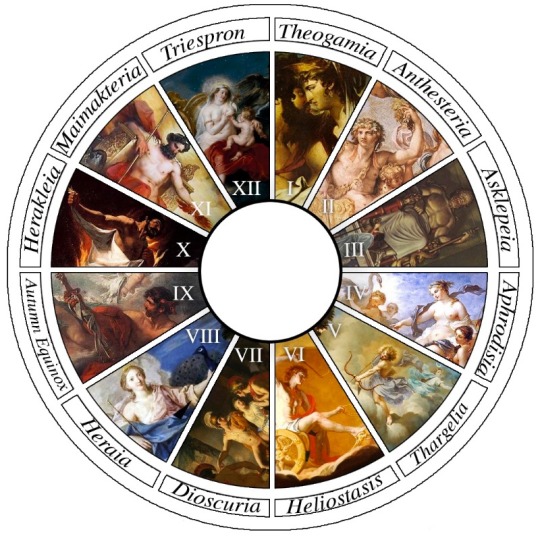
The Greek Wheel of the Year
1. January, beginning of the sign of Aquarius, celebration of Theogamia (Sacred Marriage). Goddess Hera dominates during this month and the cultivated virtues are Boldness (Παρρησία) and Pride (Υπερηφάνεια).
2. February, beginning of the sign of Pisces, celebration of Anthesteria (honoring Dionysus, the God of vegetation). During this month God Poseidon dominates and the virtues cultivated are Piety (Ευσέβεια) and Integrity (Χρηστότης).
3. March, beginning of the sign of Aries, celebration of the Spring Equinox and Asklepeia (honoring God Asclepius). In this month Goddess Athena dominates and the virtues of Bravery (Ανδρεία) and Ingenuity (Αγχίνοια) are cultivated.
4. April, beginning of the sign of Taurus, celebration of Charesia – Aphrodisia (honoring Goddess Antheia Aphrodite, the Graces and “georgios” / “terrene” Sun -Helios of the spring). During this month Goddess Aphrodite dominates and the virtues of Love (Φιλότης) and Generosity (Γενναιοδωρία / Χαριστικότης) are cultivated.
5. May, beginning of the sign of Gemini, celebration of Thargelia (honoring the twin Gods Apollo and Artemis). During this month God Apollo dominates and the virtues of Harmony (Αρμονία) and Honesty / Straightforwardness (Ειλικρίνεια / Ευθύτης) are cultivated.
6. June, beginning of the sign of Cancer, celebration of the Summer Solstice. During this month God Hermes dominates and the virtues of Knowledge of good dealings (Ευσυναλλαξία) and Sociability (Ευκοινωνησία) are cultivated.
7. July, beginning of the sign of Leo celebration of Dioscuria and honoring the Dioscuri and the heroes of the battle of Thermopylae. During this month God Zeus dominates and the virtues of Justice (Δικαιοσύνη) and Orderliness (Ευταξία) are cultivated.
8. August, beginning of the sign of Virgo, celebration of Heraia in honor of the Goddess Hera. During this month, the Goddess Demeter dominates and the virtues of Endurance (Καρτερία) and Prudence (Σύνεσις) are cultivated.
9. September, beginning of the sign of Libra, celebration of the Autumn Equinox and honors to the heroes of the battle of Marathon. During this month God Hephaestus dominates and the virtues of Creativity (Ευμηχανία) and Diligence (Φιλοπονία) are cultivated.
10. October, beginning of the sign of Scorpio (Taurus polarity), celebration of Herakleia (honoring God Hercules, the “demetrius” / “subterranean” Helios – Sun of the autumn). God Mars dominates this month and the virtues of Courage (Θαρραλεότης) and Steadfastness (Ευψυχία) are cultivated.
11. November, beginning of the sign of Sagittarius, celebration of Maimakteria (invocation to God Zeus Maimaktes for a mild winter). Goddess Artemis dominates this month and the virtues of Wisdom (Σωφροσύνη) and Self-Restraint (Εγκράτεια) are cultivated.
12. December, beginning of the sign of Capricorn, celebration of Triespron (birth of Triesperos Herakles) and of the Winter Solstice. During this month Goddess Hestia dominates and the virtues of Stability (Σταθερότης) and Decency (Κοσμιότης) are cultivated.
Since it is January (Gamelion | Γαμηλιών) let us begin with the Theogamia, the Sacred Marriage of Zeus and Hera. This festival honors the union of the King and Queen of Olympus. Their union produces Life, which is represented by Dionysus (the winter sun), who’s festival is celebrated in February.
Household Ritual
A simple at home for the following festival that can be done at your altar/shrine. Burning of incense (styrax is recommended). You may wish to decorate, you can do so using the attributes of the gods. Peacock feathers and lilies for Hera, and eagle feathers and oak branches for Zeus.
Opening Ritual
“Hear us/me Gods of the Hellas, You we/I call upon, to come to us/me in good mind.
Hear us/me blessed ones and come to us/me from fire, from earth, from water, from air, and from Olympus.”
Wish to the Gods of the Hearth
“We/I invoke you Household God,
Overseer of the home
increaser of our possessions,
in every space, house or workshop
and always in charge.
We/I invoke your presence Goddess Hestia,
holy light,
seated in the center, of every space, house or workshop
and always in charge
We/I invoke your presence Ephestian Gods
and divine ancestors,
pure sources of all generations
invisible just spirits
guides of your offspring.
Come to us/me in good spirits,
You who possess all the graces, come to this sacred ceremony
Heed our/my prayer with a favorable ear
Come to us/me and take away
troubles and illnesses,
Give us/me peace that brings happiness,
prosperity, well-being of the body
and increase the light of our minds”
“May it be!”
Invocation to Zeus and Hera
Hymn to Zeus
“O Zeus, much-honour’d, Zeus supremely great,
To thee our holy rites we consecrate,
Our pray’rs and expiations, king divine,
For all things to produce with ease thro’ mind is thine.
Hence mother Earth and mountains swelling high
Proceed from thee, the deep and all within the sky.
Saturnian king, descending from above,
Magnanimous, commanding, sceptred Jove;
All-parent, principle and end of all,
Whose pow’r almighty shakes this earthly ball;
Ev’n Nature trembles at thy mighty nod,
Loud-sounding, arm’d with light’ning, thund’ring God.
Source of abundance, purifying king,
O various-form’d, from whom all natures spring;
Propitious hear my pray’r, give blameless health,
With peace divine, and necessary wealth.”
Hymn to Hera
“O royal Hera, of majestic mien,
Aerial-form’d, divine, Zeus’ blessed queen,
Thron’d in the bosom of cerulean air,
The race of mortals is thy constant care.
The cooling gales thy pow’r alone inspires,
Which nourish life, which ev’ry life desires.
Mother of show’rs and winds, from thee alone,
Producing all things, mortal life is known;
All natures share thy temp’rament divine,
And universal sway alone is thine.
With sounding blasts of wind, the swelling sea
And rolling rivers roar when shook by thee.
Come, blessed Goddess, fam’d almighty queen,
With aspect kind, rejoicing and serene.”
Closing of the Ritual
“Farewell Blessed ones, farewell eternal Gods,
To the pious worshipers, increase the Divine Light,
Disease, pains and decay take away to the ends of the earth.
May it be.”
Source:
https://www.patheos.com/blogs/agora/2018/01/hearth-hellenism-greek-wheel-year/
22 notes
·
View notes
Text



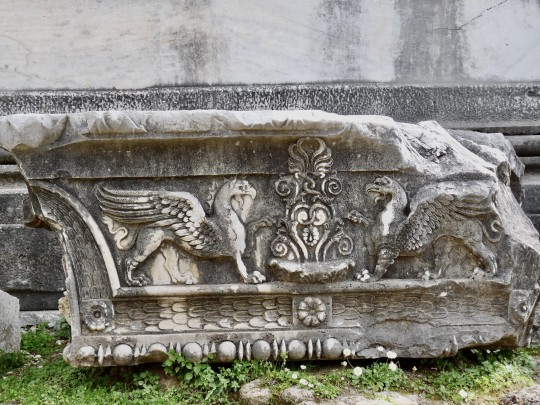
Turkey 2009 (2) (3) (4) by d0gwalker
Via Flickr:
(1) The Temple of Hadrian stands on Curetes Street in the ruined ancient city of Ephesus, near Selçuk in modern day Turkey.
(2) (3) Herakleia is a ruined ancient town on the eastern edge of Lake Bafu on the western side of Turkey, by the modern day village Kapıkırı.
(4) Fallen lintel stone at Didyma carved with the image of two griffins lies within the central enclosure of the Temple of Apollo.
0 notes
Text

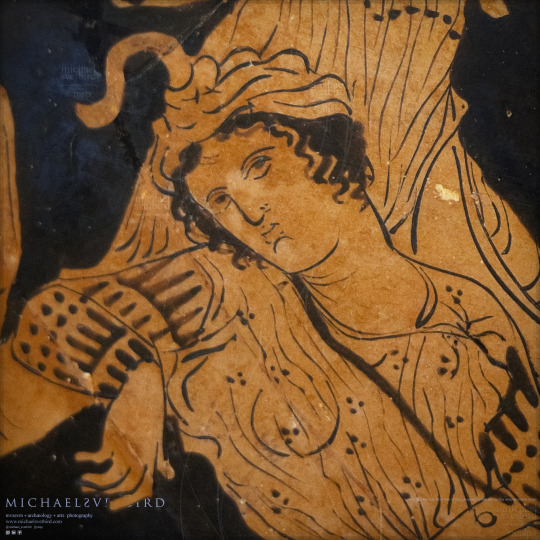

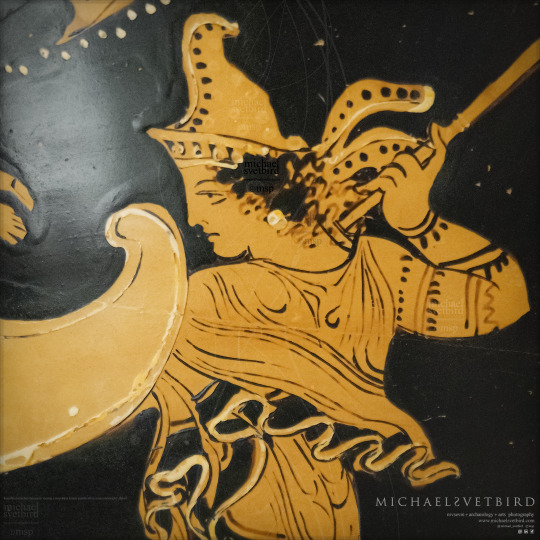

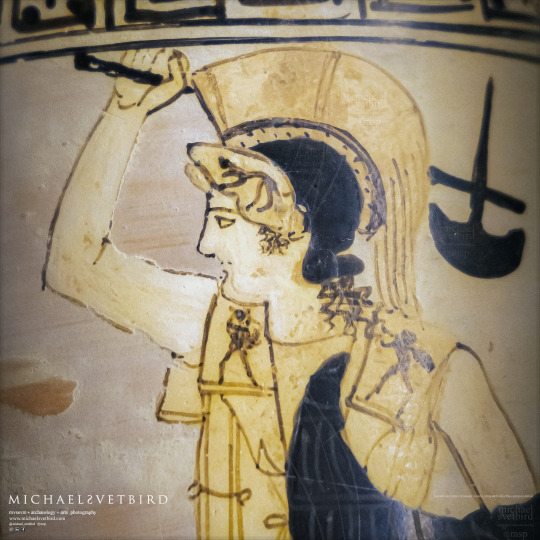

📸 6 NEW PICS [108.-113.] added to the "PORTRAITS OФ AMAZONS" MSP Online Photo-gallery:
👉 D-ART:
https://www.deviantart.com/svetbird1234/gallery/67332393/portraits-of-amazons-gallery
👉 FB | Album:
https://www.facebook.com/michael.svetbird/media_set?set=a.769989173369662&type=3
📸 Pics 1.-2.:
AMAZON w/ Axe [1.]
PENTHESILEA [2.]
Details of proto-Lucanian Red-figured Hydria attributed to the Policoro Painter
End of the 5th c. BC
[From Herakleia Tomb I. also known as "Tomb of the Policoro Painter"]
Museo Archeologico Nazionale della Siritide or "Policoro Museum", Policoro:
• Web : https://museosiritide.beniculturali.it
• FB : https://www.facebook.com/DirezioneRegionaleMuseiBasilicata
• IG : @museibasilicata
[Ph-ed at Baths of Diocletian, Rome]
MANS | Michael Svetbird phs©msp 06|23 3000X3000 600 nos.108-109.
📸 Pics 3.-5.:
MOUNTED AMAZON [3.]
AMAZON w/ Spear [4.]
PENTHESILEA [5.]
Details of Apulian Red-figured Volute Krater, Side A
Amazonomachy
Attributed to the Ilioupersis | Iliupersis Painter [Wiki: https://en.wikipedia.org/wiki/Ilioupersis_Painter ].
2nd quarter of the 4th c. BC
From Taranto | Magna Grecia
KunstHistorisches Museum, Vienna | KHMV
["Ancient Greece and Rome", Kabinett IV]
• Web : https://www.khm.at/en
• FB : https://www.facebook.com/KHMWien
• IG : @kunsthistorischesmuseumvienna
KHMV | Michael Svetbird phs©msp 08|23 3000X3000 600 nos.110-112.
📸 Pics 6.:
AMAZON in Attic Hoplite Armour [6.]
Detail of white-ground Lekythos from Eretria, Εὔβοια [Greece]
Mid-5th c. BC.
KunstHistorisches Museum, Vienna | KHMV
["Ancient Greece and Rome", Saal XIV Griechische Vasen]
Web : https://www.khm.at/en
FB : https://www.facebook.com/KHMWien
IG : @kunsthistorischesmuseumvienna
KHMV | Michael Svetbird ph©msp 08|23 3000X3000 600 no. 113.
The photographed objects are collection items of MAN Siritide and KHMV, photos are subject to copyrights
[non commercial use | sorry for the watermarks]
📸 Part of the "PORTRAITS OФ AMAZONS" MSP Online Photo-gallery:
👉 D-ART:
https://www.deviantart.com/svetbird1234/gallery/67332393/portraits-of-amazons-gallery
👉 FB | Album:
https://www.facebook.com/media/set/?set=a.769989173369662&type=3
#policoro#vienna#archaeological museum#history museum#kunsthistorisches museum#vase painting#ancient art#red figure pottery#ancient ceramics#ancient pottery#attica#krater#lekythos#hydria#ancient#archaeology#mythology#museology#antiquity#amazon#amazons#penthesilea#oiorpata#amazonomachy#photo gallery#art photography#archaeology photography#museum photography#michaelsvetbird
15 notes
·
View notes
Text
Herakleia Antik Kenti'nde Menteşe Beyliği dönemi yapıları ortaya çıktı
Herakleia Antik Kenti’nde Menteşe Beyliği dönemi yapıları ortaya çıktı
Kapıkırı Mahallesi’nde yer alan Herakleia Antik Kenti’nde, Endymion Kutsal Alanı ile Göl Kalesi’nde gerçekleştirilen kazı çalışmalarında çeşitli yapılar ortaya çıkarıldı, önemli bilgilere ulaşıldı.
Antik dönemde bir liman kenti olan Herakleia’nın zaman içinde körfezin ağzının kapanmasıyla oluşan Bafa Gölü’nün kenarında yer aldığını belirten Büyüközer, elde edilen bulguların antik kent hakkındaki…
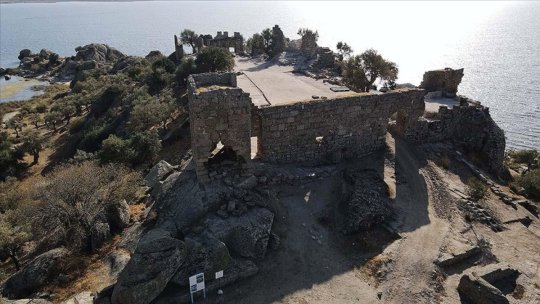
View On WordPress
0 notes
Photo
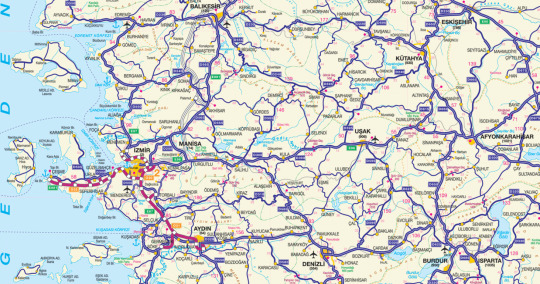
İzmir'den 4 Günlük Karavan Rotası
İzmir’den Karavan Rotası
Kolay Karavan olarak sizler için İzmir’den çıkışlı en güzel karavan rotasını hazırladık. Yapmanız gereken sadece kendinize 4-5 gün ayırıp, bu eşsiz deneyimi yaşamak!
Karavan kiralamayı, doğaya ulaşan en kısa yol olarak görüyor, en kolay, en hızlı ve en güvenilir karavan kiralama deneyimini sunmak için çalışmalarımıza aralıksız devam ediyoruz.
Türkiye’deki karavan kamp alanları ile sizler için görüşmeler ve ziyaretler yapıyor, en doğru adresleri deneyimleyerek karavan kiralama yapan misafirlerimize hazırlıyoruz. Yakın dönemde bu alandaki çalışmalarımızın topluca sunulduğu alt yapılara da geçiş sağlayacağız.
Sizlerden en çok gelen sorulardan birisi olan “İzmir’den karavan kiralayarak nerelere gidilir?” sorusuna cevap bulmak için, Müşteri Başarı Uzmanlarımız'dan Eda, sizler için bu güzel yazıyı derledi.
Keyifli okumalar dileriz.
İzmir’den Başlayan Akdeniz Rotanız; İzmir- Aydın- Muğla- Antalya- Denizli
İzmir ilinden yola çıkarak Akdeniz turu yapmak sizlere iyi gelecek, özgürlüğü keşfedeceksiniz. İlk adresiniz Aydın’da bulunan tarihi yerleri ziyaret etmek olmalıdır. Tarihi antik kentlere veya kalelere gidebilir tarihin derin sularında gezinebilirsiniz. Aydın’a gitmişken mutlaka deniz koylarına uğrayın ve Kuşadası’nın yaz havasını soluyun. Geceyi Muğla’da geçirmeniz sizin için oldukça farklı olacaktır. Konaklamak için çam ağaçları arasında muhteşem deniz manzarasının keyfini çıkarmak istiyorsanız Datça Aktur Camping karavan kamp alanını tercih etmelisiniz. Masmavi koyları gözlerinizi kamaştıracak Hisarönü Körfezi'ne karşı kamp yapmak ve çam ormanıyla doğanın serüvenlerini deneyimlemek isterseniz Hisarönü Köyü Bozburun yolu üzerinde bulunan Evcan Camping konaklayacağınız yer olmalıdır.
Muğla’nın tarihi zenginlikler açısından en zengin ilçesi olan Milas’a gitmelisiniz. Helenistik dönem mimarileri ile dikkat çeken Herakleia Antik Kenti, etkileyici Zeus Tapınağı ile ünlü Euromos Antik Kenti, tarihi Erken Tunç Çağı’na kadar uzanan Labranda Antik Kenti gibi Milas’ta bulunan tarihi yerler keşfedilecek pek çok hazineye sahiptir. Doğa severlere unutulmaz bir deneyim sunan Uyku Vadisi, Saklıkent Kanyonu, Kelebekler Vadisi ve Saklı Göl doğanın içinde yorgunluğunuzu atabileceğiniz rahat bir nefes alabileceğiniz çok sevilen gezi alanlarındandır. Masmavi denizinin tadını çıkarabileceğiniz Ölüdeniz, Cennet Koyu ve Bodrum’un keşfedilmeyi bekleyen gizli koyları mutlaka uğramanızı önerdiğimiz yerler arasındadır.
Akdeniz turuna başlamışken ilk aklımıza gelen tatil şehrimize uğramadan olmaz. İnsana huzur veren denizi, doğa harikası olan şelaleleri ve eşsiz sahilleri ile sizleri karşılayacağından emin olabilirsiniz. Türkiye’nin en özel yerlerinden biri olan Düden Şelalesi etrafında özel mağara yapıları bulunmaktadır. Dev oyuklar bulunan bu şelalenin etrafında aynı zamanda da özel oturma alanları yer almaktadır. Düden Şelalesi’ne gitmeyi ihmal etmeyin. Antalya’da düzenlenen doğa gezileri ve rafting turlarının en popüler adreslerinden olan Manavgat Şelalesi Antalya Merkezinde bir saatte ulaşabileceğin bir tabiatı cenneti. Köprülü Kanyon, Tazı Kanyonu, Sapadere Kanyonu ve Göynük Kanyonu doğa güzellikleri ile ünlü Antalya’nın başka bir tabiat harikalarıdır. Antalya’nın sahillerini, antik kentlerini ve doğa harikalarını izlemek için Olympos Teleferik sizler için Akdeniz’in muhteşem kuş bakışı manzaralarını sunacaktır. Akdeniz’in doğa havası ile huzurlu bir gece geçirmeniz için Kaş Camping zeytin ağaçlarının gölgesinde, denize sıfır, hayallerinizin ötesinde bir doğa deneyimi yaşamanız sağlar. (https://www.instagram.com/kaskamping/)
Yeryüzünde benzersiz doğa harikası olan Pamukkale’yi görmek istemez misiniz? Denizli‘de yer alan Pamukkale, her yıl milyonlarca insanın ziyaret ettiği kar beyazı travertenleri, şifalı termal suları, büyüleyici Kleopatra Havuzu, Hierapolis Antik Kenti ve görkemli antik tiyatrosu sizlere farklı bir deneyim kazandırıyor olacaktır. Pamukkale’nin efsanevi hikayesini de öğrenmeyi ihmal etmeyin. Geniş ve rahat ahşap verandaların veya çimlerin üzerinde oturarak Denizli Ovasın'a hâkim konumdan kuşbakışı seyir keyfi yaşamanızı sağlayan Tepe Camping konaklamanız için ideal karavan kamp alanıdır. Doğa harikaları ile dolu keyifli tatilinize Aydın üzerinden geçerek İzmir’de sonlandırabileceksiniz.
Karavan rotanıza karar vermek ve değiştirmek tamamen sizlere bağlı bir karardır. Görmek istediğiniz şehirlere neden karavanla gitmiyorsunuz? Tek yapmanız gereken karar vermek ve KolayKaravan'dan güvenilir şekilde bir karavan kiralamak. Sonrasında yola çıkmak için milyonlarca nedeniniz olacak...
Yeni deneyimler keşfetmek, kültürel zenginliklere yakından şahit olmak Kolay Karavan sayesinde çok kolay. Kolay Karavan ailesi olarak bizler seyahat rotanızda sizlere yardımcı oluyoruz.
0 notes
Text
Pedallar Antik Kent Heraklia'da Dönecek
Pedallar Antik Kent Heraklia’da Dönecek
AJANSSPOR – HABER
Tarihi Helenistik periyoda uzanan, Milas sonları içinde bulunan Antik Kent Herakleia kenti dev bir buluşmaya hazırlanıyor. Memleketler arası Bafa MTB CUP Lansman toplantısı, basın mensuplarının da iştirakiyle 20 Ekim 2022 Perşembe günü Bafa Gölü kenarında yer alan Çeri Restoran’da gerçekleştirildi.
Antik Kent Herakleia’da yapılacak
22-23 Ekim tarihleri ortasında Bafa Kapıkırı…

View On WordPress
0 notes
Link
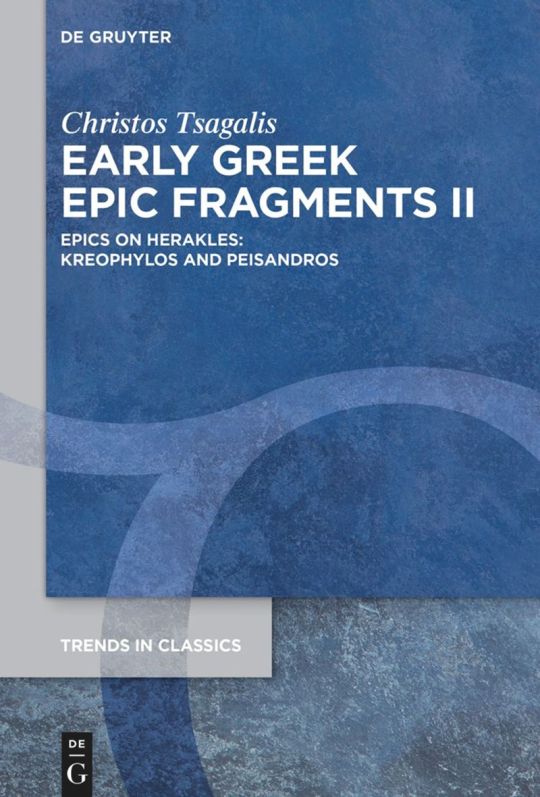
0 notes
Text
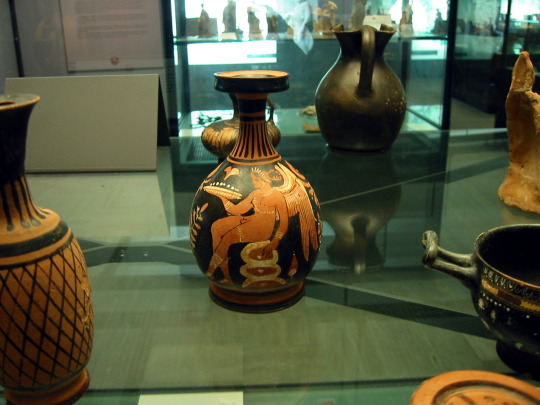
Greek Pottery
* Siris / Herakleia
* Museo Nazionale Della Siritide, Policoro
source: No machine-readable author provided. AlMare assumed (based on copyright claims)., Public domain, via Wikimedia Commons
47 notes
·
View notes